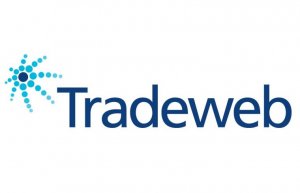Managing the Modern Trading Ecosystem
Frost & Sullivan Report Outlines Challenges, Solutions and the Way Forward.

Financial markets have become more complicated over the last three years. Rapid cloud migration and the pandemic combined to upend traditional exchange protocols and trading behaviors. As a result, network connectivity requirements between data centers and dispersed endpoints have been rerouted and redefined in today’s high-frequency, high-performance trading ecosystem.
Though the dust hasn’t settled, a new trading infrastructure has clearly formed in 2023. With staggering shifts in GDP and trading volatility since 2020, a report from Frost & Sullivan makes the case that decision-makers need to prioritize new challenges, adopt new solutions and show their clients and counterparts the way forward. The report, “Management of the Modern Trading Ecosystem: Ensuring Financial Market Continuity in the Midst of Global Connectivity,” marks a new roadmap for global trading.
First, Frost & Sullivan analysts paint a picture of expanding but volatile financial markets that have resulted from dramatic, pandemic-driven changes in business behaviors across the entire economic ecosystem:
• US GDP declined 31.2% and the unemployment rate shot up to 14.7% in the first half of 2020, followed by a stunning rebound in Q3 (+33.8% and 7.9% respectively).
• The US stock market finished up 2020 almost 20% ahead of 2019.
• Despite Covid and supply chain issues, the market kept growing in 2021 (S&P 500 +26.9%, DJIA +8.7%, Nasdaq Composite +21.4%).
• 48.9 billion equity share trades were completed globally in 2021, a 27.6% increase over 2020.
• The market shot back down against unexpected headwinds in 2022 – but this seems more like the “new normal” and to be expected amid such volatility. In 2023, the inevitable growth trend line continues, and the long-term momentum remains positive.
Understand the Challenges
With so many tip-of-the-spear issues, from supply chain security to nation-state bad actors to black swan disruptions, financial markets are in constant state of flux. Frost & Sullivan’s report refines and helps focus on the mission-critical challenges:
• Global exchanges continue to increase their points of connectivity, which inflate OpEx (operating expenditures), CapEx (capital expenditures) and market data costs.
• Market data exchange and transaction volumes are growing, requiring significantly more bandwidth.
• Exchanges are performing more migrations and upgrades that disrupt their customers.
• New network routes, technologies and exchange options are emerging; just maintaining competitive parity presents substantial risk and cost burdens.
• Expanding operations geographically requires integrating new vendors and partners, thus increasing time-to-market and support costs.
• Connecting into a vast ecosystem of high-volume trading participants involves flawless management of virtually incalculable individual network connections; optimization is a critical priority.
Legacy systems remain, but cloud migration continues, data centers evolve, and the edge of all networks expands unabated. It is expensive and time consuming for trading firms to do this on their own and must strike a balance between buying, building and establishing partnerships with managed service providers (MSPs). Frost & Sullivan noted that in a recent survey of global market CIOs, nearly one third will be moving components and workloads to MSPs by 2025. In the same survey, a 27% increase in cloud-ready applications are expected by 2025.
Increasing trading complexity demands new solutions based on operational resilience, uninterrupted access to multiple global exchanges, ultra-low latency connectivity and platform-enabled managed trading orchestration capabilities. For example, Nasdaq has announced an aggressive cloud strategy with its introduction of its Cloud Data Service. The Frost & Sullivan report highlighted key strategic imperatives toward achieving these goals.
According to the report, “optimizing the end-to-end system requires eliminating gaps and enhancing collaboration and network effects among participants. The result is a global connected backbone engineered for low latency, resilience, and proactive monitoring.”
Frost & Sullivan Strategic Imperatives
Manage services – At its foundation, a managed services strategy brings together myriad community endpoints to address the specific and fluid needs of financial market participants. Buyers, sellers, brokers, analysts, market makers, regulators, and stakeholders need connectivity and colocation, and the ability to access market data instantaneously and reliably across hybrid, multi-cloud environments.
Manage costs – Global access to multiple exchanges and trading centers is expensive. Service providers and stock exchange operators can achieve consistent cost oversight by locating within established ecosystems. By ensuring access to multiple brokers and data vendors, continuity of service is maximized and the need for support staff is minimized, resulting in dramatic OpEx reductions.
Reduce latency – Market players must react to market changes much more quickly than before, and as a result, expect nothing less than high-speed access and frequency everywhere, all the time. A managed infrastructure minimizes this complexity and maximizes reaction time. MSPs bring together community endpoints and allow brokers and exchanges to achieve desired trading execution outcomes.
Elevate customer service – For all trading counterparties, COVID-19 restrictions and supply-chain headaches have forced another new paradigm: access to support has become non-negotiable. Frost & Sullivan acknowledge that real-time monitoring is a given, but support can’t simply be automated; having a deep bench of industry experts on staff and boots on the ground in key global locations is requisite. From a simple fix to a network outage, MSPs have the ability to scale response, and provide more direct expertise due to the underlying relationships with local providers.
Trading equities, derivatives and now blockchain currencies have become massively complex processes. The MSP value proposition is a global connected backbone engineered for low latency, resilience and proactive monitoring. This is the “new normal,” where hyperscale capabilities are required, yet with DIY legacy systems and traditional processing still playing a role in the greater ecosystem.
As the report states, “the advantage of an MSP is in bringing together numerous community endpoints to address the specific needs of financial market participants and in easing their burden by supplying a wide range of solutions.
Futureproof Through United Connectivity
Frost & Sullivan confirmed that, by uniting connectivity, infrastructure, trading solutions and market data, we can improve network performance for all financial market participants.
In this world of hyperscale cloud service providers (CSPs), MSPs can connect the dots between different data needs across each trading firm’s front and back office, providing the right data when and where it’s needed. MSPs and colocation partners can empower the enterprise to not only wield more investment power on behalf of their clients, but can also help quantify and reduce energy consumption and match mutual climate change commitments.
Frost & Sullivan point to more forces at work and more change management ahead. According to a Finance and Climate Change study by InfluenceMap, the six largest US banks have pledged net-zero carbon emissions, but only seven of 30 institutions surveyed have set thermal coal exit plans and only four have committed to reducing fossil fuel exposure by 2025. Expect the rest of the financial services sector to follow banks’ lead.
There are many forces at work – some barely imagined before 2020 and pandemic-accelerated cloud adoption. Global monetary and social concerns colliding with the urgency of financial trading necessitates more reliable infrastructure, and the maturing of trading technology.
Traders need to focus on their business. They require uninterrupted access to multiple exchanges, and on-the-ground support around the globe. Having trustworthy managed service partners and relationships is essential to achieving connectivity and interoperability between private and public clouds, that in turn are critical to maintaining competitive advantage. Frost & Sullivan’s analysis confirms that, since 2020, the time it takes to fall behind has been drastically reduced, but the consequences of not keeping up have become much higher.

Jeff Mezger is Vice President of Product Management at TNS with responsibility for its managed services for the financial industry. He oversees product development and strategy for market data, online and data center services.









